Ferrara in October - Day 2
Monday gets off to a slow start. We’re also undecided about parking but in the end happen upon a space in a small free car park just near a footbridge over the river which takes us into the centre of Ferrara handy for Casa Romei.
It’s included in the ticket but lacks anything memorable apart from a few grottesco decorations. Since it didn’t take long we go to the Biblioteca Ariosto.
This is nice, a friendly lady explains the library in a low voice, someone else explains we can visit the Teatro anatomico and we take a photo near the giant Ginkgo biloba in the garden behind the Library. Coming out we find a Montaditos but it’s still early so we go in search of via delle Volte.
Very nice but difficult to capture the ‘right’ photo. We also find the weekly market. But it’s lunchtime and the thought of Montaditos is irresistible, and we stop for lunch. The owner is extremely friendly and welcoming. Montaditos is always Montaditos but his enthusiasm also makes it special. We order a Spanish collection, a large Cruzcampo, patatas bravas, water and coffee for me for just 20 euros. There’s a patio inside and it’s a relaxing place to have a light lunch and chat.
We come out feeling more energetic and head straight for the Castle.
The visit starts with the dungeons, not a part I’m keen on. Then up to the Giardino Pensile, very small compared to the one in Mantova. There’s an exhibition about Linus magazine in one of the rooms. I go up the Torre dei Leoni while Andrea waits below to save his knee. There are about 120 steps but it’s an easy climb. When I get to the top there’s just the guardian, a volunteer of Auser, and we chat for a while, or rather we look at the view and he explains about medieval and Renaissance Ferrara, which is very helpful. He also comments that the best things to see in Ferrara are Palazzo Schifanoia and the Archaeological Museum which we’re planning to visit the next day.
Back down in Il salone dei Giochi we admire the frescoes. The following rooms have more frescoes and some information about the area followed by the sala della Devoluzione. The room, characterized by a ceiling painted with grotesques which incorporates four scenes with historical subjects, is also called the "Red Room" to underline the presence of a red frieze surmounted by a plinth which gives harmony and continuity to the ceiling. The Sala dei Paesaggi and the exhibition of the works of Arrigo Minerbi and other early 20th century artists is also nice. The castle makes for an interesting visit and there are some similarities with Palazzo Ducale in Mantova, which I think I prefer.
The visit to the castle takes a couple of hours. When we come out, we head for a bench but then realise that if we walk quite fast we should be in time to make the narrow time slot to see the frescoes of the nuns' church of the Monastero of Sant'Antonio in Polesine of the nuns of the Order of Saint Benedict dedicated to Anthony the Great. The monastery, founded in the early Middle Ages by Augustinians hermits, stood on an island in the middle of the Po River. The part of the church which is open to the public is in baroque style, with a 17th-century frescoed ceiling. But by respecting the times indicated on the door it’s possible to visit the nuns' church which has spectacular frescoes of the school of Giotto including scenes from the infancy of Jesus and the Life of Mary in the left chapel, in the right there are Stories of the Passion. The central chapel has frescoes of later periods, including a beautiful 15th century Annunciation of Domenico Panetti and a ceiling with 16th-century grotesques. This is unusual in an ecclesiastical setting, but due to the close ties between the monastery and the Este court, where such pagan decorations were fashionable in the late 1600s.
The visit is a’guided’ visit by a very elderly nun with a very weak voice. We almost feel guilty for disturbing her, but fortunately we are not the only visitors. At 5 o’clock the nuns sing ‘Canti Gregoriani’. We stay for a few minutes but the few and almost trembling voices of the elderly nuns are sad more than anything. I wonder how long they’ll resist. It’s been a long day and it’s time to walk back to the car through the narrow warm brick streets of Ferrara.

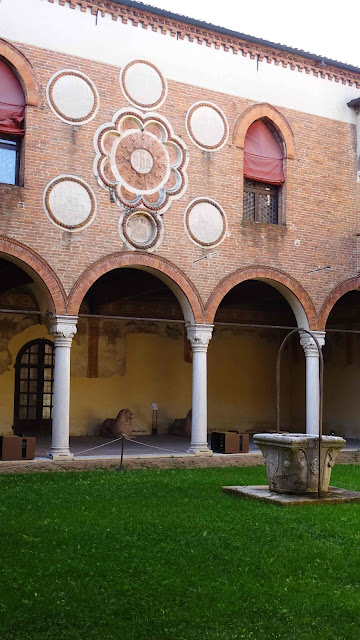
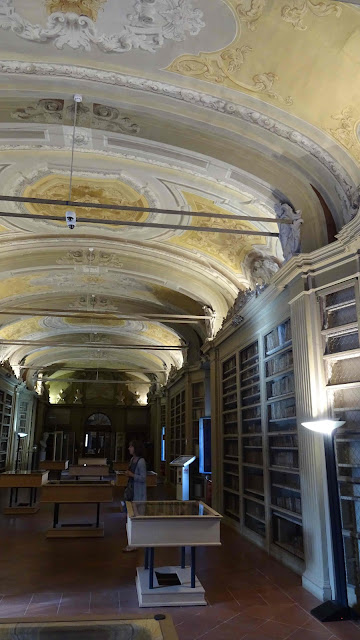

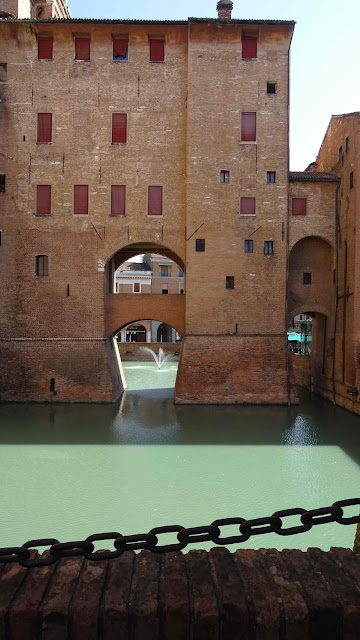
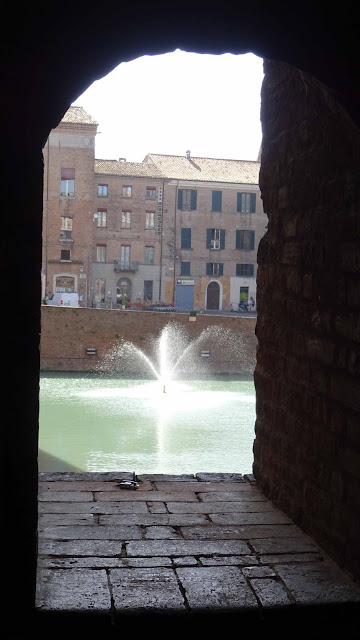

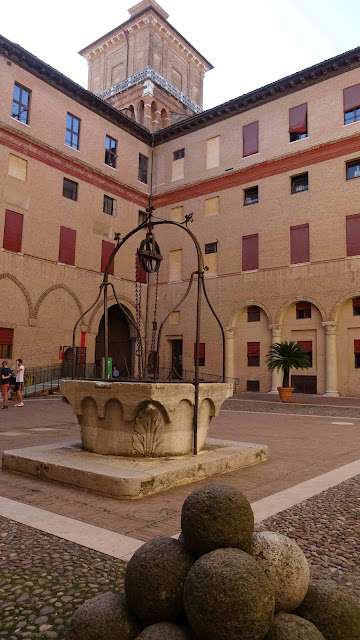


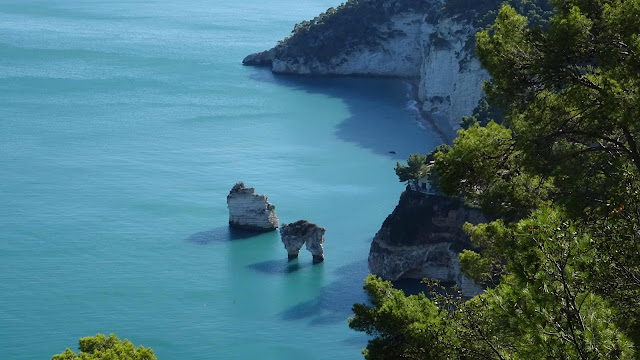
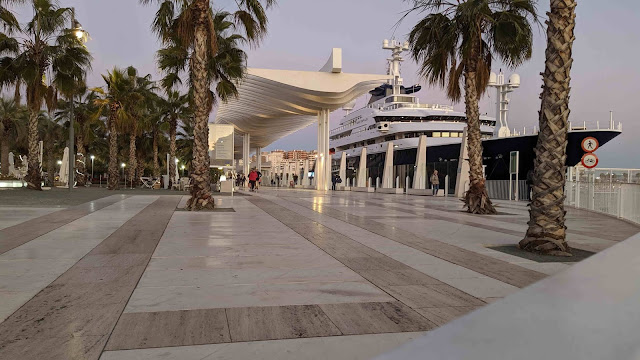



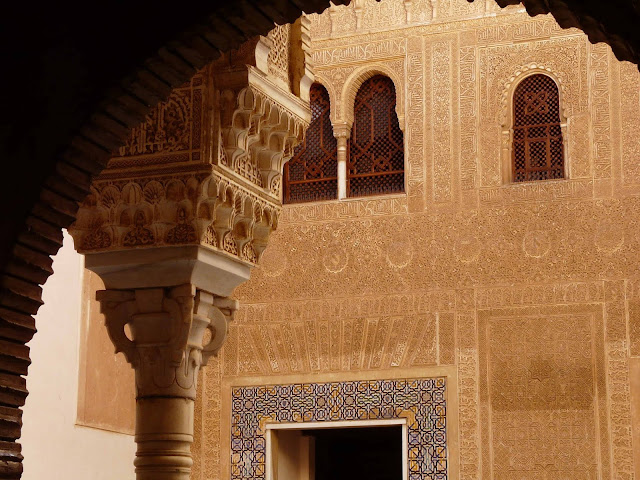
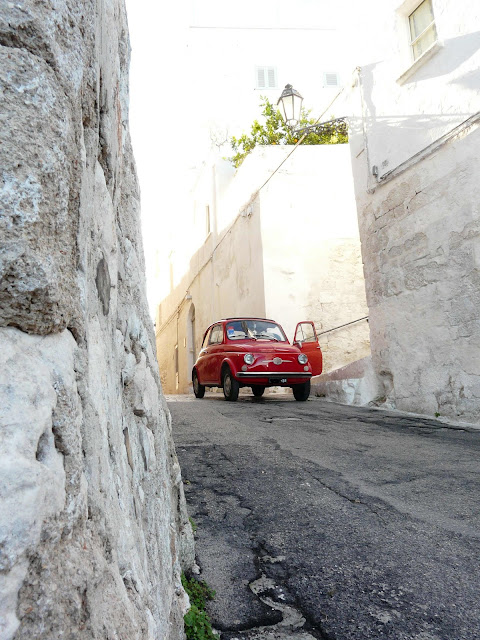
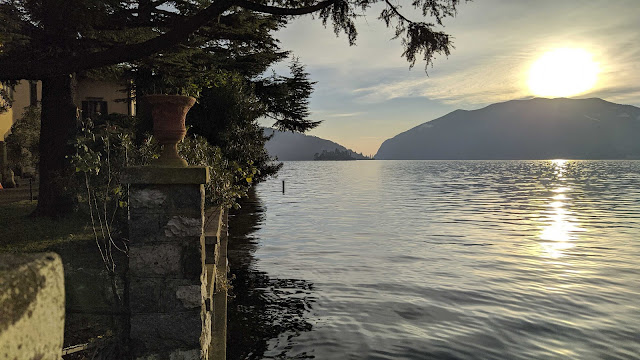

Comments
Post a Comment